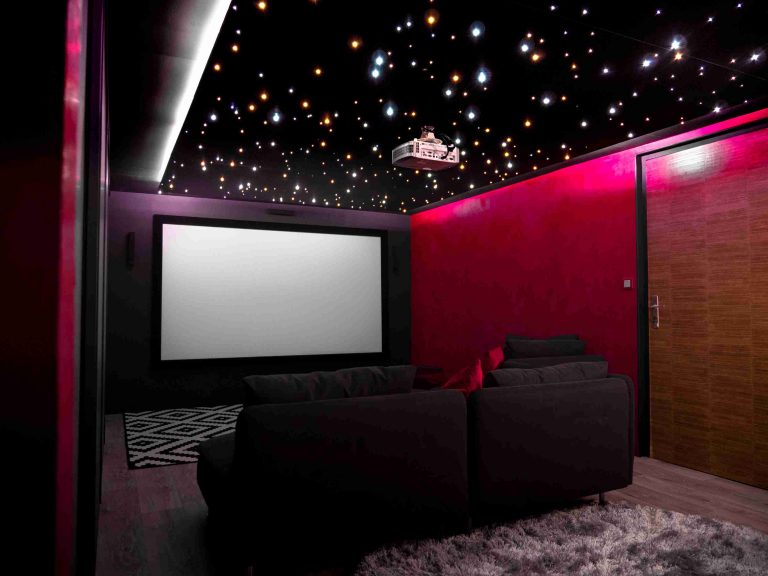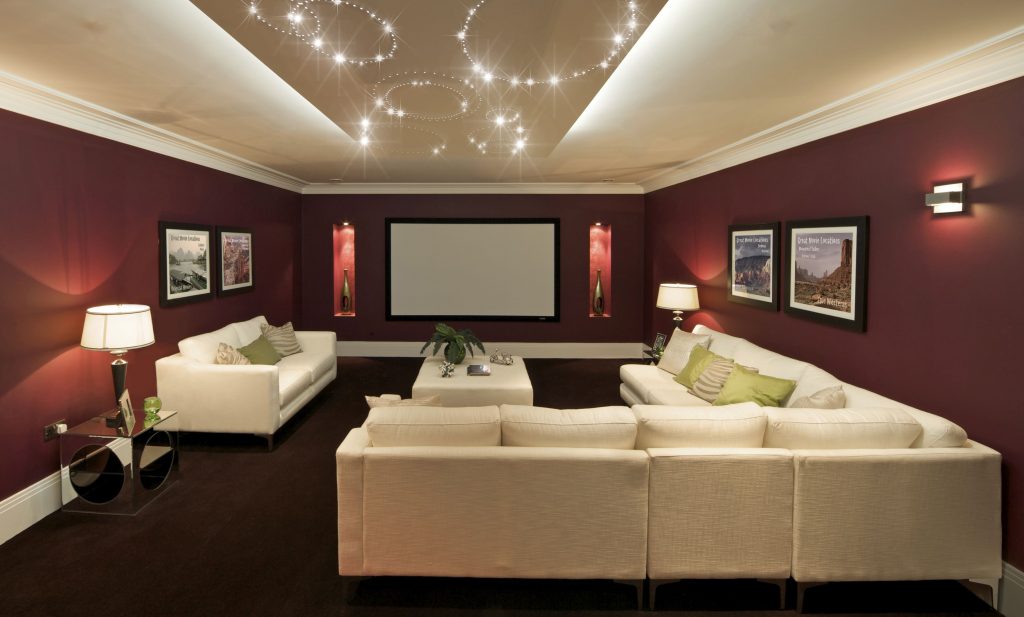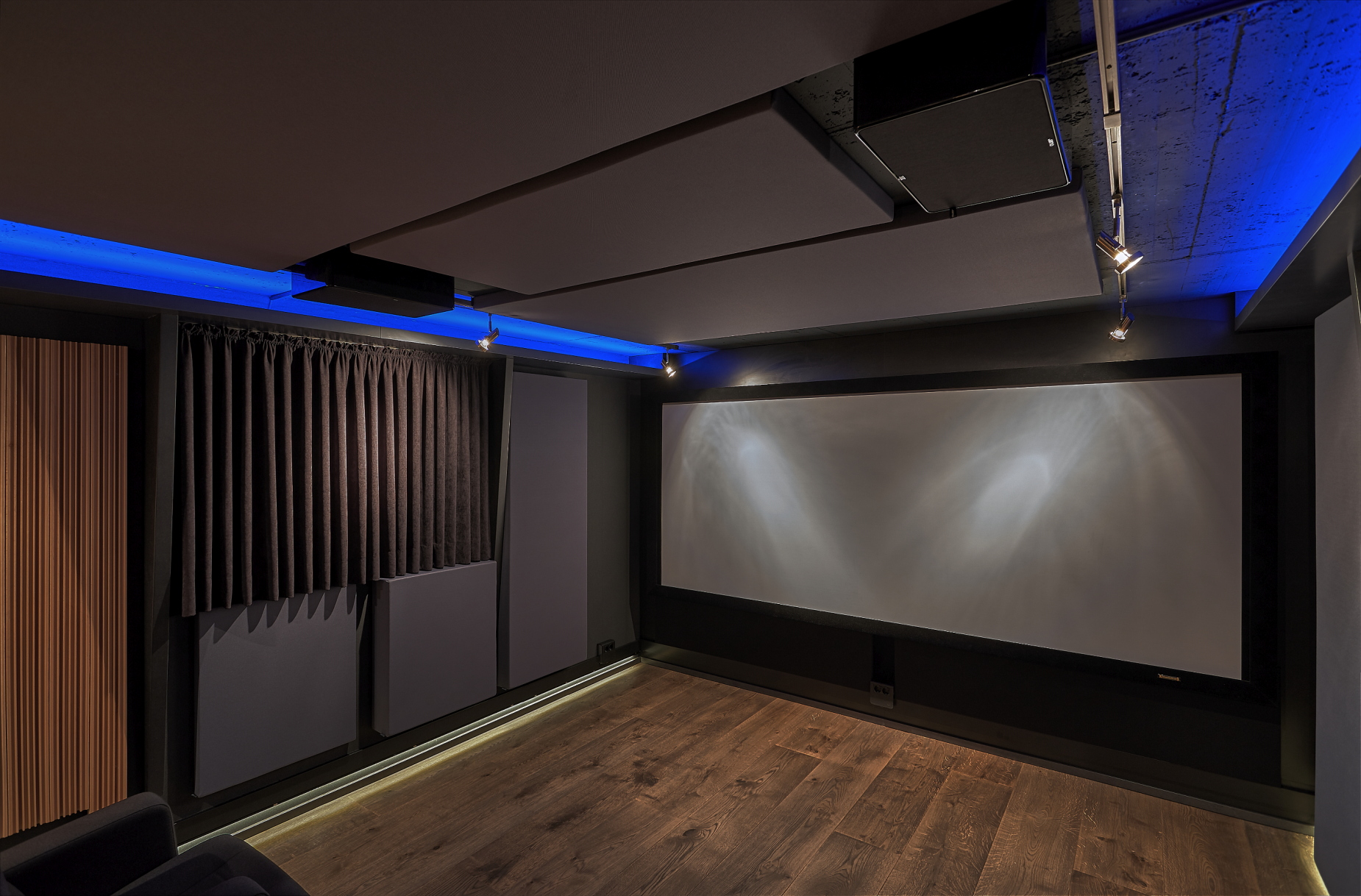Acoustics solutions for home cinema
กก
An all-round successful film
experience is not just a fantastic picture, but also a great sound
experience. However,
not only movie discs and speakers are responsible for satisfactory sound
quality. Room acoustics in particular play a decisive role in sound
quality.
In addition to the budget for an attractive loudspeaker ensemble, you
should therefore always budget enough for measures to optimize the room
acoustics
in your home theater. Below we present you with 10 tips on how you can
acoustically optimize your home theater room with little effort.

Tip1: Avoid first reflections
For real movie enjoyment in our home theater, we expect the perceived
sound to fit the spatial environment in the film. In a church scene,
voices should sound correspondingly reverberating, while a voice echo in
desert scenes would rather irritate.
Now it is the case that the original soundtrack on the Blu-ray or DVD is
always influenced by the peculiarities of our home cinema space.
For example, because of the reflections of sound on the walls, we
perceive the dimensions of the space in which we find ourselves.
In order to hear as much as possible the original soundtrack and
minimize the influence of the peculiarities of the room,
it helps to minimize early reflections of the sound through the
absorber. We opted for the visually appealing solution in the form of
acoustic images .

Tipp2: Optimal floor covering for the home cinema
All the cinemas I've been to have been carpeted. Above all, carpet in
the cinema ensures that frequencies in the high-pitch range are
absorbed.
In addition to these acoustic properties, a cinema carpet also
contributes to a cozy cinema atmosphere. When choosing a cinema rug,
it's all about the pile height of the rug. The lower the pile, the fewer
pitches are swallowed.
Of course, it is not always possible or desirable to lay a cinema carpet
as a flooring for the home theater.
Especially those who have integrated their home cinema into the living
room will have to compromise. Disadvantages are, for example,
hard-reflecting surfaces such as tiles or granite. For such flooring, it
helps to lay a rug between the front speaker and the listening position.

Tip3: The perfect wall covering for your home cinema
The wall covering plays just as important a role for the room acoustics
of your home cinema as the floor. As a rule of thumb:
Smooth surfaces such as tiles or adhesive wallpaper are hard reflective
in the middle and high frequencies and lead to a room with long
reverberation times.
Voices in the film can overlap and sound washed out. Much more suitable
surfaces for your home theater are wallpaper with rough texture
(rough-hued wallpaper)
or even acoustic plasters. In our home cinema "Kinoschmiede" we have
processed cotton plaster for the walls and are highly satisfied.
In addition to the acoustically positive properties, the cotton plaster
ensures a pleasant indoor climate.
The basement wall feels warmer thanks to the cotton plaster than
ordinary plaster or Rauhfasertapeten.
We advise against covering the walls partially or even completely with
carpet, fleece or velours. These materials mainly absorb high frequency
frequencies.
As a result, especially voices in films sound subdued.
Tip4: The ceiling sail
In Tip1 we have already described the avoidance of first reflections.
Acoustic images can reduce the initial reflections on the walls between
the front speakers and the listening position. A ceiling sail fulfills
the same purpose, but only for the upper ceiling area between the viewer
and the screen.
In our home cinema, we have installed a ceiling sail, which consists of
two melamine resin foam panels.
The 7cm thick melamine resin foam panels are covered with an
anthracite-colored acoustic fabric and stretched in a wooden frame.

Tip5: Use diffusers to keep the sound alive
In the implementation of a home theater, it can quickly happen that the
room is stuffed with too much sound-absorbing material.
The result is a low-noise room in which the sound arrives muffled in the
audience. Violent film explosions seem more like little firecrackers,
voices sound as if the actors speak behind closed doors. A livelier
sound experience can be achieved by integrating elements into your
cinema room
that throw the sound back in different directions. Natural diffusers may
be, for example, Blu-ray shelves or a projector mount.
In order for the Blu-ray / DVD shelf to reflect the sound as diffusely
as possible, a slightly chaotic arrangement of the Blu-ray films is an
advantage.
So you offer the sound an inhomogeneous area. Of course you can also buy
professional diffusers. But these are usually disproportionately
expensive
กก
กก